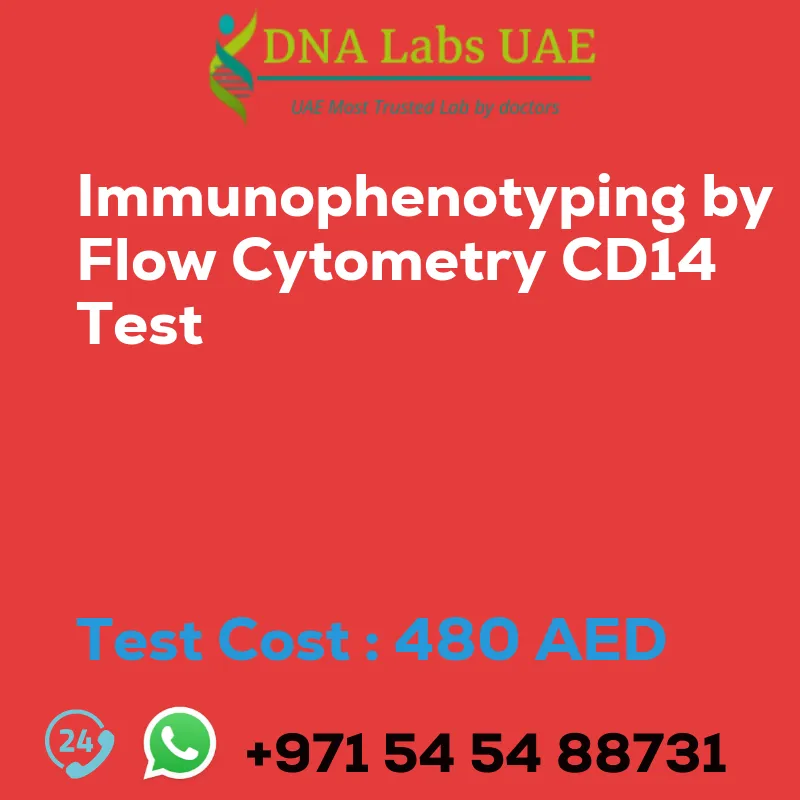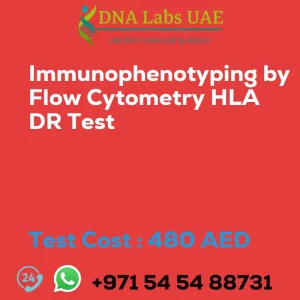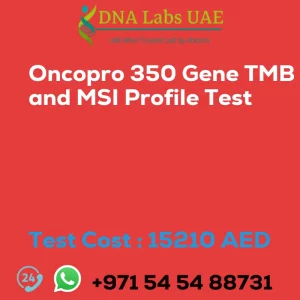IMMUNOPHENOTYPING BY FLOW CYTOMETRY CD14 Test
Test Name: IMMUNOPHENOTYPING BY FLOW CYTOMETRY CD14 Test
Components: CD14 Test
Price: 480.0 AED
Sample Condition: 3 mL (2 mL min.) whole blood in 1 Lavender Top (EDTA) tube and 3 mL (2 mL min.) whole blood in 1 Green Top (Sodium Heparin) tube OR 2 mL (1 mL min.) Bone marrow in 1 Green Top (Sodium heparin) tube. Ship immediately at 18-22°C. DO NOT REFRIGERATE OR FREEZE. Specify time, date, and clinical details on the test request form.
Report Delivery: Sample Daily by 9 am; Report Same day
Method: Flow Cytometry
Test type: Cancer
Doctor: Oncologist, Hematologist
Test Department: FLOW CYTOMETRY
Pre Test Information: Give brief clinical history.
Test Details:
CD14 is a surface marker protein that is primarily expressed on the surface of monocytes and macrophages. It plays a role in the innate immune response and acts as a receptor for lipopolysaccharide (LPS), a component of bacterial cell walls.
Immunophenotyping by flow cytometry is a technique used to analyze and quantify the expression of specific surface markers on cells. In the case of CD14, flow cytometry can be used to determine the percentage of cells expressing this marker within a population of cells.
To perform a CD14 immunophenotyping test, the following steps are typically followed:
- Sample preparation: Blood or tissue samples are collected from the patient and processed to obtain a single-cell suspension.
- Antibody staining: Fluorescently-labeled antibodies specific for CD14 are added to the cell suspension. These antibodies will bind to CD14 if it is present on the cell surface.
- Incubation: The cell suspension is incubated for a period of time to allow the antibodies to bind to the CD14 protein.
- Flow cytometry analysis: The cell suspension is passed through a flow cytometer, which uses lasers to excite the fluorescent labels on the antibodies. The emitted fluorescence is then detected and measured by the flow cytometer.
- Data analysis: The flow cytometry data is analyzed using specialized software to determine the percentage of cells expressing CD14. This can be further analyzed in combination with other markers to identify specific cell populations within the sample.
CD14 immunophenotyping by flow cytometry is commonly used in research and clinical settings to study immune cell populations and assess immune system function. It can be particularly useful in diagnosing and monitoring conditions such as sepsis, autoimmune disorders, and certain types of cancer.
| Test Name | IMMUNOPHENOTYPING BY FLOW CYTOMETRY CD14 Test |
|---|---|
| Components | |
| Price | 480.0 AED |
| Sample Condition | 3 mL (2 mL min.) whole blood in 1 Lavender Top (EDTA) tubeAND 3 mL (2 mL min.) whole blood in 1 Green Top (Sodium Heparin) tube OR 2 mL (1 mL min.) Bone marrow in 1 Green Top (Sodium heparin) tube. Ship immediately at 18\u0192??22?\u00f8C. DO NOT REFRIGERATE OR FREEZE. Specify time, date and clinical details on test request form. |
| Report Delivery | Sample Daily by 9 am; Report Same day |
| Method | Flow Cytometry |
| Test type | Cancer |
| Doctor | Oncologist, Hematologist |
| Test Department: | FLOW CYTOMETRY |
| Pre Test Information | Give brief clinical history. |
| Test Details |
CD14 is a surface marker protein that is primarily expressed on the surface of monocytes and macrophages. It plays a role in the innate immune response and acts as a receptor for lipopolysaccharide (LPS), a component of bacterial cell walls. Immunophenotyping by flow cytometry is a technique used to analyze and quantify the expression of specific surface markers on cells. In the case of CD14, flow cytometry can be used to determine the percentage of cells expressing this marker within a population of cells. To perform a CD14 immunophenotyping test, the following steps are typically followed: 1. Sample preparation: Blood or tissue samples are collected from the patient and processed to obtain a single-cell suspension. 2. Antibody staining: Fluorescently-labeled antibodies specific for CD14 are added to the cell suspension. These antibodies will bind to CD14 if it is present on the cell surface. 3. Incubation: The cell suspension is incubated for a period of time to allow the antibodies to bind to the CD14 protein. 4. Flow cytometry analysis: The cell suspension is passed through a flow cytometer, which uses lasers to excite the fluorescent labels on the antibodies. The emitted fluorescence is then detected and measured by the flow cytometer. 5. Data analysis: The flow cytometry data is analyzed using specialized software to determine the percentage of cells expressing CD14. This can be further analyzed in combination with other markers to identify specific cell populations within the sample. CD14 immunophenotyping by flow cytometry is commonly used in research and clinical settings to study immune cell populations and assess immune system function. It can be particularly useful in diagnosing and monitoring conditions such as sepsis, autoimmune disorders, and certain types of cancer. |








